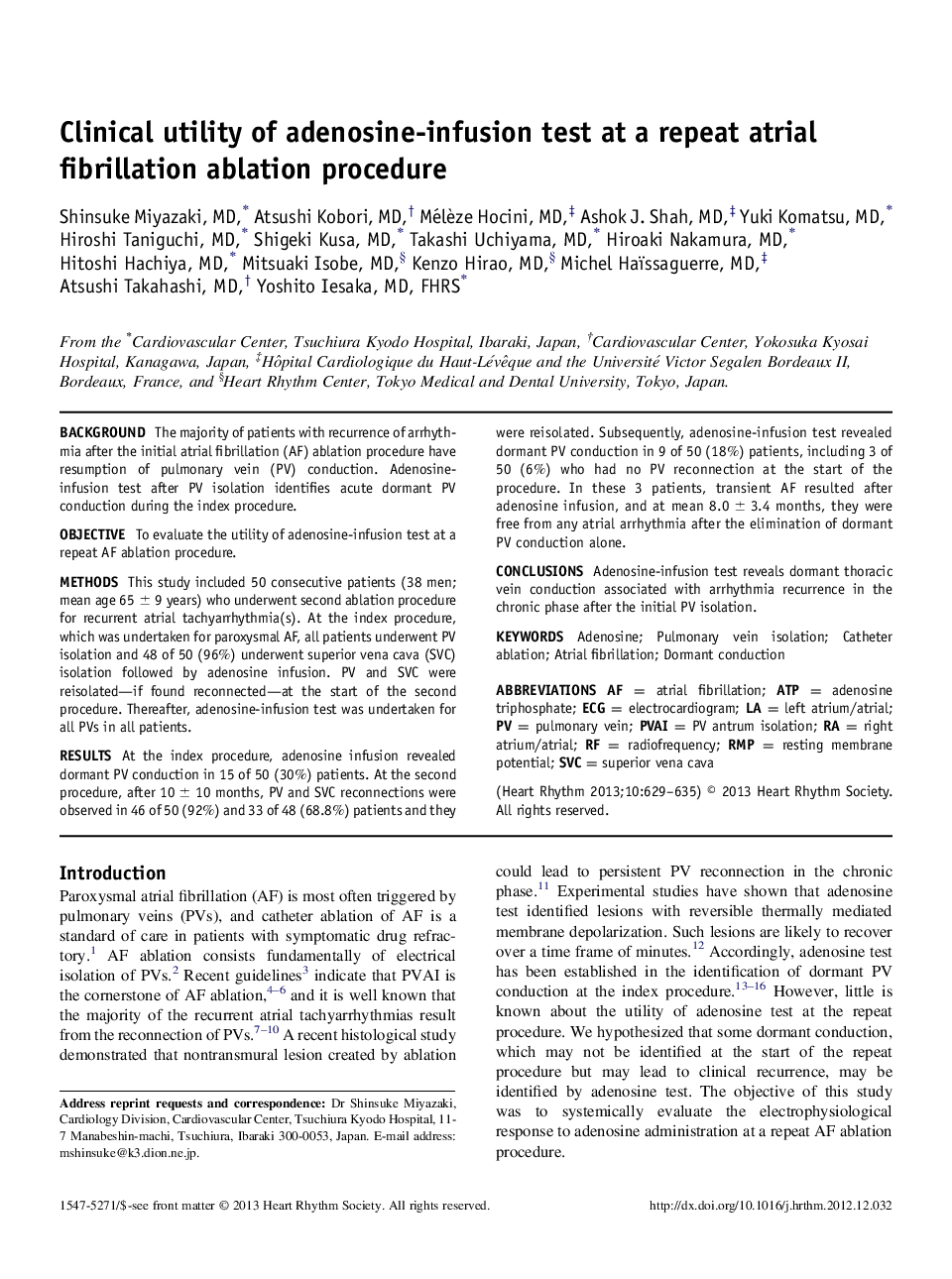| Article ID | Journal | Published Year | Pages | File Type |
|---|---|---|---|---|
| 5961406 | Heart Rhythm | 2013 | 7 Pages |
BackgroundThe majority of patients with recurrence of arrhythmia after the initial atrial fibrillation (AF) ablation procedure have resumption of pulmonary vein (PV) conduction. Adenosine-infusion test after PV isolation identifies acute dormant PV conduction during the index procedure.ObjectiveTo evaluate the utility of adenosine-infusion test at a repeat AF ablation procedure.MethodsThis study included 50 consecutive patients (38 men; mean age 65±9 years) who underwent second ablation procedure for recurrent atrial tachyarrhythmia(s). At the index procedure, which was undertaken for paroxysmal AF, all patients underwent PV isolation and 48 of 50 (96%) underwent superior vena cava (SVC) isolation followed by adenosine infusion. PV and SVC were reisolated-if found reconnected-at the start of the second procedure. Thereafter, adenosine-infusion test was undertaken for all PVs in all patients.ResultsAt the index procedure, adenosine infusion revealed dormant PV conduction in 15 of 50 (30%) patients. At the second procedure, after 10±10 months, PV and SVC reconnections were observed in 46 of 50 (92%) and 33 of 48 (68.8%) patients and they were reisolated. Subsequently, adenosine-infusion test revealed dormant PV conduction in 9 of 50 (18%) patients, including 3 of 50 (6%) who had no PV reconnection at the start of the procedure. In these 3 patients, transient AF resulted after adenosine infusion, and at mean 8.0±3.4 months, they were free from any atrial arrhythmia after the elimination of dormant PV conduction alone.ConclusionsAdenosine-infusion test reveals dormant thoracic vein conduction associated with arrhythmia recurrence in the chronic phase after the initial PV isolation.
